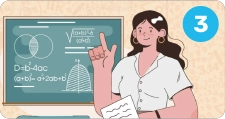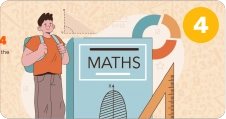My Experience with the SAT Essay – Do You Really Need It?
When I first heard about the SAT Essay, my first thought was: Do I really have to write this? A long, timed essay after hours of answering math and reading questions? No, thank you.
But then I started digging deeper. Some colleges still considered it, and it seemed like an extra way to showcase my skills. So, I decided to give it a shot. If you’re in the same boat—unsure whether to take the SAT Essay or skip it—this guide will help you figure it out.
Let’s break it down in a simple, no-fluff way—what it is, how it works, and most importantly, how to ace it if you decide to take it.
What Is the SAT Essay?
The SAT Essay is optional, but here’s how it works:
- You get 50 minutes to analyze a passage and write an essay.
- The passage (usually 650-750 words) is an argument—your job is to explain how the author builds their case.
- No personal opinions. No creative writing. Just analysis of the author’s techniques.
Sounds straightforward, right? But trust me, it’s trickier than it looks.
Is the SAT Essay Even Worth Taking?
So, here’s the big question: Should you take it?
Well, as of 2021, the College Board discontinued the SAT Essay for most test-takers, except for those taking it as part of SAT School Day. That means if you’re taking the standard SAT on a weekend, the essay won’t even be an option.
However, some schools still consider it, and if you are applying to competitive universities, it might be worth adding to your application. My advice? Check your college’s requirements before deciding.
Back when I was preparing for the SAT, I was so focused on improving my math and reading scores that I almost overlooked the SAT Essay. In my SAT Prep Journey blog, I talked about the mistakes I made in my SAT Mock Test and how I improved. But one thing I wish I had considered earlier? Whether or not the SAT Essay was worth taking. Let’s break it down so you don’t have to second-guess your decision.
How the SAT Essay Is Scored
Alright, let’s talk about scores. Unlike the main SAT, which is out of 1600, the SAT Essay is scored separately in three areas:
- Reading (Did you understand the passage?)
- Analysis (Did you break down the argument effectively?)
- Writing (Did you write clearly and use strong grammar?)
Each category gets a score from 2 to 8, so a perfect essay score would be 24 (8+8+8).
Most high scorers land somewhere between 15-20. If you hit that range, you’re in great shape.
For more detailed information, refer this link : https://satsuite.collegeboard.org/sat-school-day/taking-the-test/essay
How to Write a Strong SAT Essay
Let’s be real—50 minutes to read, analyze, and write is not a lot of time. But if you plan ahead, you can absolutely crush it. Expand these sections to know how I tackled it:
When I first attempted the SAT Essay, I made the classic mistake of just reading the passage like it was a story. Big mistake. This isn’t casual reading—you need to be on the lookout for how the author builds their argument.
What helped me? Marking up the passage as I read. I underlined key phrases, circled persuasive techniques, and jotted quick notes in the margins.
Here’s what you should look for:
✔ Evidence – Does the author use facts, statistics, or expert opinions?
✔ Reasoning – How do they connect their ideas logically?
✔ Persuasive Techniques – Emotional appeals, rhetorical questions, vivid language?
I used to think planning was a waste of time—why not just start writing? Wrong again. A solid plan saves time and makes your essay stronger.
I always spent about 5-7 minutes outlining my essay like this:
Introduction:
- Briefly introduce the passage and its main argument.
- Mention one or two techniques the author uses (you’ll expand on these later).
Body Paragraphs (2-3):
- Focus on one persuasive technique per paragraph.
- Provide specific evidence from the passage.
- Explain why the technique is effective.
Conclusion:
- Quickly wrap up your analysis.
- No need to restate everything—just reinforce your main points.
Once I started writing, I had to remind myself: this isn’t an English class essay. Keep it clear, to the point, and well-organized.
Some things that worked for me:
- Use strong topic sentences at the start of each paragraph.
- Quote directly from the passage—but don’t overdo it.
- Avoid summarizing the passage—the graders already know what it says. Focus on analysis.
I learned this the hard way. The first time I wrote an SAT Essay, I barely finished in time, and my last paragraph was a rushed mess.
So, on my next attempt, I saved 3-5 minutes at the end to proofread. I caught silly mistakes, reworded awkward sentences, and even fixed a weak argument. That small effort made a huge difference in my final score.
Sample SAT Essay – What a High-Scoring Essay Looks Like
Before we dive into a high-scoring SAT Essay response, let’s look at a real SAT Essay prompt. This question is from an official SAT practice test provided by the College Board.
As you read the passage below, consider how Adam B. Summers uses:
- Evidence, such as facts or examples, to support claims.
- Reasoning to develop ideas and to connect claims and evidence.
Stylistic or persuasive elements, such as word choice or appeals to emotion,
to add power to the ideas expressed.
Adapted from Adam B. Summers, “Bag Ban Bad for Freedom and Environment.”
©2013 by Adam B. Summers. Originally published in the San Diego
Union-Tribune, June 13, 2013.
- Californians dodged yet another nanny-state regulation recently when the state
Senate narrowly voted down a bill to ban plastic bags statewide, but the reprieve
might only be temporary. Not content to tell us how much our toilets can flush or
what type of light bulb to use to brighten our homes, some politicians and
environmentalists are now focused on deciding for us what kind of container we can
use to carry our groceries. - The bill . . . would have prohibited grocery stores and convenience stores with at least
$2 million in gross annual sales and 10,000 square feet of retail space from providing
single-use plastic or paper bags, although stores would have been allowed to sell
recycled paper bags for an unspecified amount. The bill fell just three votes short of
passage in the Senate . . . and Sen. Alex Padilla, D-Los Angeles, who sponsored the
measure, has indicated that he would like to bring it up again, so expect this fight to
be recycled rather than trashed. - While public debate over plastic bag bans often devolves into emotional pleas to save
the planet or preserve marine life (and, believe me, I love sea turtles as much as the
next guy), a little reason and perspective is in order. - According to the U.S. Environmental Protection Agency, plastic bags, sacks, and
wraps of all kinds (not just grocery bags) make up only about 1.6 percent of all
municipal solid waste materials. High-density polyethylene (HDPE) bags, which are
the most common kind of plastic grocery bags, make up just 0.3 percent of this total. - The claims that plastic bags are worse for the environment than paper bags or cotton
reusable bags are dubious at best. In fact, compared to paper bags, plastic grocery
bags produce fewer greenhouse gas emissions, require 70 percent less energy to make,
generate 80 percent less waste, and utilize less than 4 percent of the amount of water
needed to manufacture them. This makes sense because plastic bags are lighter and
take up less space than paper bags. - Reusable bags come with their own set of problems. They, too, have a larger carbon
footprint than plastic bags. Even more disconcerting are the findings of several
studies that plastic bag bans lead to increased health problems due to food
contamination from bacteria that remain in the reusable bags. A November 2012
statistical analysis by University of Pennsylvania law professor Jonathan Klick and
George Mason University law professor and economist Joshua D. Wright found that
San Francisco’s plastic bag ban in 2007 resulted in a subsequent spike in hospital
emergency room visits due to E. coli, salmonella, and campylobacter-related
intestinal infectious diseases. The authors conclude that the ban even accounts for
several additional deaths in the city each year from such infections. - The description of plastic grocery bags as “single-use” bags is another misnomer. The
vast majority of people use them more than once, whether for lining trash bins or
picking up after their dogs. (And still other bags are recycled.) Since banning plastic
bags also means preventing their additional uses as trash bags and pooper scoopers,
one unintended consequence of the plastic bag ban would likely be an increase in
plastic bag purchases for these other purposes. This is just what happened in Ireland
in 2002 when a 15 Euro cent ($0.20) tax imposed on plastic shopping bags led to a
77 percent increase in the sale of plastic trash can liner bags. - And then there are the economic costs. The plastic bag ban would threaten the
roughly 2,000 California jobs in the plastic bag manufacturing and recycling industry,
although, as noted in the Irish example above, they might be able to weather the
storm if they can successfully switch to producing other types of plastic bags. In
addition, taxpayers will have to pony up for the added bureaucracy, and the higher
regulatory costs foisted upon bag manufacturers and retailers will ultimately be borne
by consumers in the form of price increases. - Notwithstanding the aforementioned reasons why plastic bags are not, in fact, evil
incarnate, environmentalists have every right to try to convince people to adopt
certain beliefs or lifestyles, but they do not have the right to use government force to
compel people to live the way they think best. In a free society, we are able to live our
lives as we please, so long as we do not infringe upon the rights of others. That
includes the right to make such fundamental decisions as “Paper or plastic?”
Write an essay in which you explain how Adam B. Summers builds an argument to persuade his audience that plastic shopping bags should not be banned. In your essay, analyze how Summers uses one or more of the features listed in the box above (or features of your own choice) to strengthen the logic and persuasiveness of his argument. Be sure that your analysis focuses on the most relevant features of the passage.
Your essay should not explain whether you agree with Summers’s claims, but rather explain how Summers builds an argument to persuade his audience.
In his article “Bag Ban Bad for Freedom and Environment,” Adam B. Summers argues against banning plastic bags, claiming that such bans are both environmentally and economically harmful. Through the use of statistical evidence, logical reasoning, and emotional appeals, Summers effectively persuades his audience that banning plastic bags is a misguided policy.
Use of Statistical Evidence
Summers strengthens his argument by citing relevant statistics that challenge the common perception that plastic bags are a major environmental threat. He points out that “plastic bags, sacks, and wraps of all kinds make up only about 1.6 percent of all municipal solid waste,” and that HDPE grocery bags account for just 0.3 percent of that total. By using precise data from the U.S. Environmental Protection Agency, Summers establishes credibility and forces the reader to reconsider whether plastic bags are truly as harmful as commonly believed.
Furthermore, Summers compares the environmental impact of plastic bags to alternatives like paper and reusable bags, revealing that plastic bags require “70 percent less energy to make” and “generate 80 percent less waste” than paper bags. These facts directly contradict the assumption that paper or cloth bags are the better choice, making his argument more compelling.
Logical Reasoning and Cause-and-Effect Analysis
In addition to presenting statistics, Summers employs logical reasoning to demonstrate the unintended consequences of banning plastic bags. He explains that many people reuse plastic bags as trash can liners or pet waste bags, and a ban would force consumers to buy new plastic bags instead. He supports this claim by referencing Ireland’s plastic bag tax in 2002, which resulted in a 77 percent increase in plastic trash bag sales. This example effectively proves that banning grocery bags does not eliminate plastic waste—it simply shifts consumption elsewhere.
Summers also highlights the health risks of reusable bags, citing a 2012 study that found San Francisco’s plastic bag ban led to a spike in E. coli and salmonella infections due to bacteria accumulating in reusable bags. This cause-and-effect analysis not only questions the effectiveness of such bans but also presents a serious health concern that the audience might not have considered.
Appeal to Emotion and Personal Liberties
Beyond facts and logic, Summers appeals to his audience’s emotions by framing the issue as a threat to personal freedom. He describes the ban as another example of government overreach, likening it to restrictions on “how much our toilets can flush” and “what type of light bulb” we can use. This rhetorical strategy positions the reader against excessive government regulation, making them more receptive to his argument.
Summers further strengthens this emotional appeal by emphasizing job losses in the plastic bag industry. He warns that the ban would endanger “2,000 California jobs” in manufacturing and recycling, a point that resonates with readers who value economic stability. By focusing on personal impact, he shifts the debate from an abstract environmental issue to a real-world consequence that directly affects people’s livelihoods.
Conclusion
Summers’ argument against plastic bag bans is highly persuasive due to his strategic use of statistical evidence, logical reasoning, and emotional appeals. He challenges misconceptions, highlights unintended consequences, and taps into the audience’s concerns about government control and economic impact. Through these techniques, he effectively convinces readers that banning plastic bags may do more harm than good.
Final Thoughts – Should You Take the SAT Essay?
If the SAT Essay is optional for your test date, you might be tempted to skip it. But if your target colleges still consider it, I would say: Take it.
With a little strategy and practice, it’s an easy way to show off your analytical skills. Even if it’s not required, a strong SAT Essay score could set you apart in competitive applications.
If I could figure it out, so can you. So, take a deep breath, grab a practice passage, and start analyzing. You’ve got this! Best of Luck for your journey!!
Still have some doubts left? Comment below and we will help you answer your queries.

















